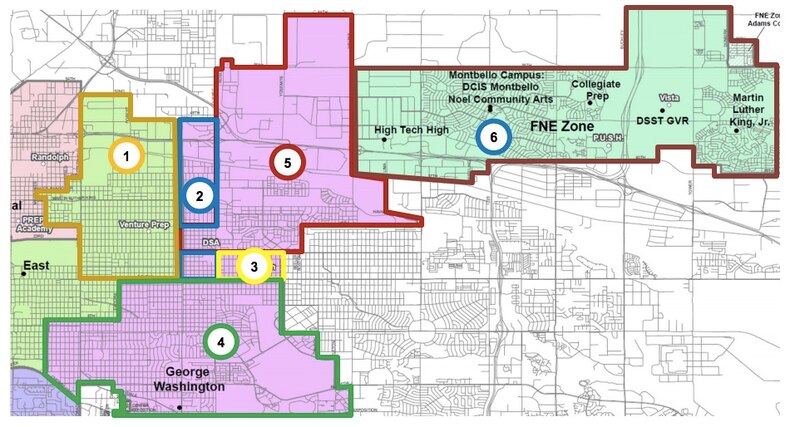Ensuring a diverse student body has emerged as the top priority for a committee that will help decide the boundaries for a new comprehensive Stapleton high school.
While some have been steeling themselves for a highly contentious process after conflicts over the capacity of the new school escalated earlier this year, the group’s meetings have proved relatively calm, with consensus on many issues and only a few moments of dispute. The committee has met for the past three weeks and plans to make a recommendation in early June.
The group is chaired by Mary Seawell, a former Denver school board president who has been vocal about the need for diversity at the new high school. It includes parents from the Stapleton, Park Hill and Far Northeast neighborhoods.
Their discussions have focused on ways to create a socioeconomically mixed student body at a school located in a largely affluent community. The committee also has focused on providing a large, comprehensive high school option for Far Northeast students, most of whom attend charters or smaller specialized schools.
The group will go before the broader Stapleton community tonight to discuss enrollment guideline options for the new school.
Drawing the lines
The question of who will attend the school is divided in two parts:
- Who will live within the school’s attendance boundaries, meaning they have a guaranteed spot, no choice request needed?
- Which regions or groups will have preference in the choice process, assuming space is available?

The first of those questions has largely resolved itself, at least among the members of the boundary group. Ninth graders from within the Stapleton elementary school boundaries (number five on the map above) as well as a slice known as the “Monaco Corridor” (number two on the map above) would have a guaranteed spot at the school .
There are currently about 170 ninth graders living in those two areas, only about a quarter of whom would come from outside the Stapleton boundary.
As reported previously by Chalkbeat, there remains some disagreement between district officials and community members about the projections for how many students the Stapleton neighborhood alone would produce. In spite of that, Stapleton community members on the committee supported inclusion of the lower-income Monaco corridor.
Designing choice to ensure diversity
Creating a diverse high school is one of the top charges Denver Public Schools gave the committee. Yet boundaries the committee will propose seem unlikely by themselves to produce a school as diverse as the committee and the district envision. So the committee will have to design a process for selecting students to fill seats not taken by kids from within the proposed attendance area.
Just 24 percent of students within the Stapleton portion of the boundary are low-income. The Monaco corridor, where 80 percent of students are low-income, houses relatively few students; only about 46 ninth grade aged kids lived in the boundary in 2013.
A potential lack of diversity at the school produced some consternation from Stapleton parents on the committee, who aimed to dispel the idea that they were opposed to an inclusive school.
“There hasn’t been pushback against diversity,” said Ginny Creighton, a parent in Stapleton. “The pushback is to the district to say, “you need to make sure there’s [enough] capacity.”
District officials attending committee meetings assured members that the district would find a way to seat every student in Stapleton and in the agreed upon boundaries.
Low-income students are likely to be enrolled in the school largely through the district’s choice process. After school officials accommodate all the students who live within the new school’s attendance boundary, they can opt to give preference to students based on sibling attendance, proximity, and income level (district lawyers have advised officials to avoid preference based on race or ethnicity).
And those preference guidelines proved to be the sticking point for committee members, who remain divided over whether students from Park Hill, who currently attend East, or the Far Northeast should be given preference. In particular, the disagreement centered on the important of having access to a comprehensive high school like the popular East High School.
Committee representatives from the Far Northeast, with support from many of the Stapleton parents, argued for preferences from their neighborhoods. Students living in that region do not have guaranteed spots at any of the city’s comprehensive high schools.
But others argued for the high school boundaries to reflect the current Stapleton middle school boundaries, which include a swath of Park Hill. Giving Park Hill students preference in the choice process would help ensure students stay together from middle school through high school.
“If we exclude them, that’s not good for community building,” said one Stapleton parent.
The meeting will take place at DSST Stapleton, 2000 Valentia St, Denver, CO, from 6 p.m. to 8 p.m. For more information on the process, see here.

